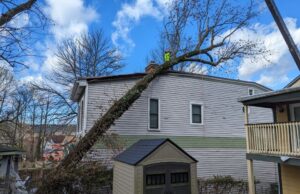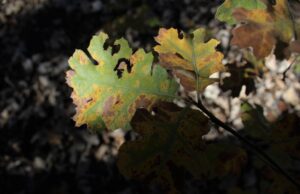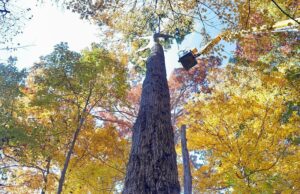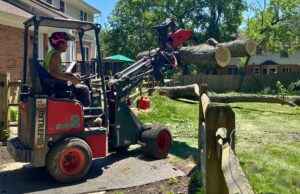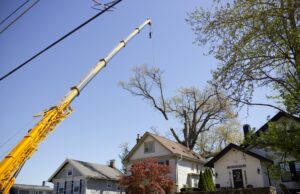In Cincinnati, tree diseases often go unnoticed until significant damage has already occurred. Warning signs like dead branches, wilting leaves, or fungal growth may seem sudden, but the underlying issue could have been silently progressing for months or even years. Left untreated, these diseases can weaken trees, turning them into potential safety hazards during storms.
The good news is, you don’t need to be a tree expert to protect your trees and property. Recognizing the signs early and knowing when to call a Certified Arborist can make all the difference.
Key Takeaways
- Tree diseases can quickly spread through properties and neighborhoods, often causing irreversible damage before visible symptoms appear.
- Oak wilt is one of the most alarming and damaging diseases, killing certain oak species within a matter of weeks.
- Early detection and proper tree care significantly reduce the risk of serious disease problems and expensive tree removal.
- While some diseases can be prevented or treated, others require prompt removal of affected trees to protect surrounding landscapes.
The Importance of Early Detection
Tree diseases that are common in the Cincinnati area can quickly transform healthy trees into hazardous liabilities. Within a single growing season, certain diseases can severely
weaken tree structure, damage root systems, and even kill mature trees that have stood the test of time for generations.
Unfortunately, the damage often starts beneath the surface, with visible symptoms appearing only after significant harm has already occurred. While some tree diseases can be treated with proper interventions, many continue to spread until the entire tree dies.
Even worse, certain diseases can move from tree to tree through connected root systems or via insects, putting entire landscapes at risk. The key is catching problems early, before diseases have a chance to compromise tree stability or spread to other trees on the property.
The impact of diseased trees goes far beyond just losing beautiful landscaping, including:
- Dying trees can increase summer cooling costs by 20-30% as valuable shade is lost.
- Dead or disfigured trees significantly reduce curb appeal and property values.
- Weakened trees are more likely to fail during storms, threatening homes and vehicles by dropping large branches or falling over completely.
- Mature trees take decades to replace, meaning their loss affects property enjoyment for generations.
- Diseased trees can infect neighboring properties, creating a problem much bigger than just your yard
That’s why it’s important to take tree diseases seriously. Luckily, you can learn to identify, treat, and ideally, prevent them altogether.
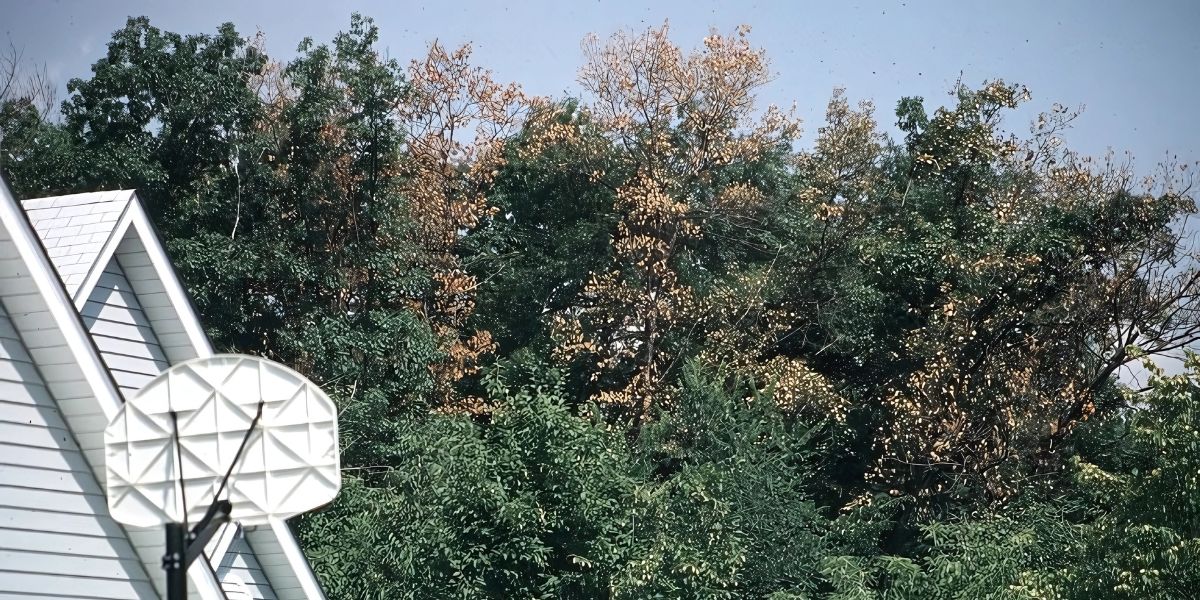
Oak wilt | Joseph OBrien, USDA Forest Service, Bugwood.org
Common Tree Diseases in Cincinnati
Cincinnati’s trees are a defining part of its neighborhoods, but they’re constantly under threat from diseases that can strike without warning. The mix of our humid summers and chilly winters creates the perfect storm for certain infections to take hold. If left unchecked, these diseases can turn a healthy tree into a hazard. By spotting the warning signs early, you can protect your trees and keep your property safe.
1. Oak Wilt
One of the most lethal diseases affecting Cincinnati’s oak trees is oak wilt because it can kill a healthy tree in just a few weeks or months. Some signs of oak wilt to watch out for from spring through summer include:
- Leaves turning brown from the crown downward
- Rapid leaf drop during growing season
- Discolored or water-soaked leaves, especially at tree top
- Dark streaks in sapwood under the bark
- Fungal spore mats that smell sweet and fruity
- Branch dieback starting at tree top
Red-black oaks (black, blackjack, pin, northern and southern red, scarlet, shingle and Shumard oak) are particularly vulnerable because they can fail the fastest when infected. On the other hand, white oaks generally last a year or two while they decline.
The most alarming aspect is how easily the disease spreads. It travels underground through interconnected root systems – its most common route – and above ground via tiny beetles that carry the fungus from tree to tree.
Once the infection takes hold, it moves rapidly through the tree’s vascular system, effectively choking off its water supply and leaving the tree to wither.
Preventing Oak Wilt
The most important thing you can do for your oaks is to prevent oak wilt in the first place. The best way to do that? Avoid pruning or wounding your oaks during the growing season (April 15–October 1). During this time, any fresh pruning cut will attract the beetle carrying oak wilt from one tree to another. Because these beetles are dormant during the winter, tree care professionals, like Lefke Tree Experts, save most oak pruning until the winter.
If infected oaks are found, nearby oaks can be saved with trenching – a technique that severs root grafts between sick and healthy trees. Once root grafts are severed, the affected tree can be removed.
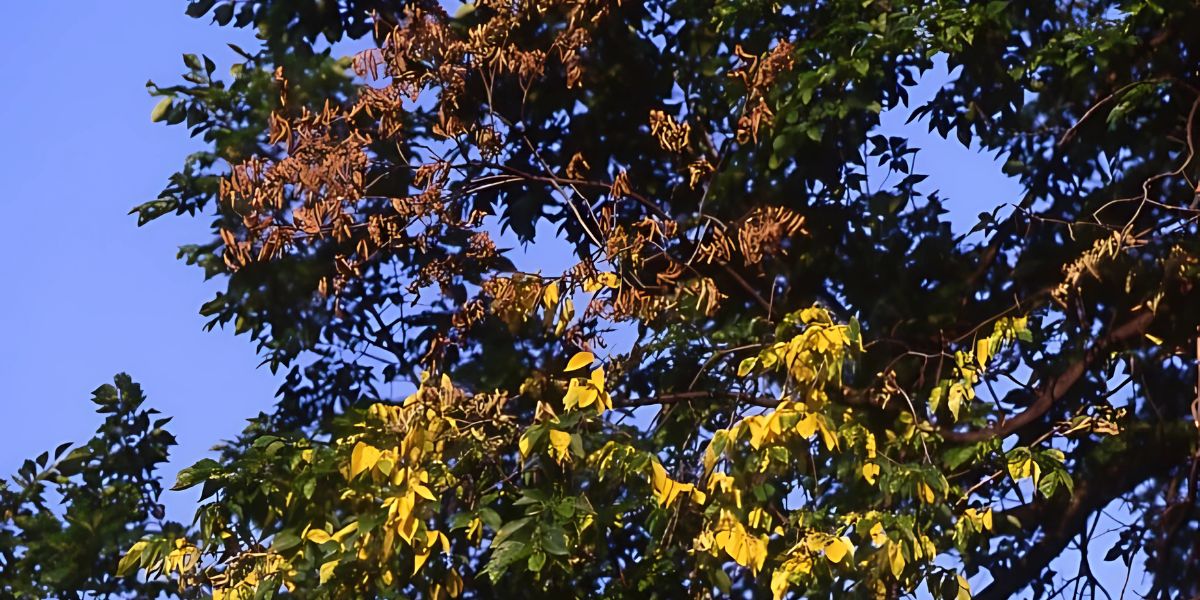
Dutch elm disease | Joseph OBrien, USDA Forest Service, Bugwood.org
2. Dutch Elm Disease (DED)
Dutch Elm Disease (DED) was introduced into America in 1930, near Cleveland, making Ohio ground zero for this devastating pathogen. Despite the name, this devastating fungal disease affects all elm species common to the Cincinnati area.
The disease spreads both underground through root connections and above ground via elm bark beetles. Once a tree is infected, the fungus blocks water movement within the tree, causing branches to wilt and die.
The most common symptoms of Dutch elm disease include:
- Yellowing and wilting leaves on outer branches
- Branch tips curling into a shepherd’s crook
- Brown streaking under branch bark
- Progressive dieback moving inward from crown
- Early leaf drop in affected branches
- Rapid decline over one to three growing seasons
Managing DED
The disease is particularly concerning because it can spread quickly through neighborhoods where mature elms have sprawling, connected root systems. DED can often be managed by:
- Planting resistant elm varieties
- Keeping elms at least 60 feet apart
- Planting them among other species of trees
- Pruning infected branches
- Trenching and severing root grafts to prevent underground spread
- Insecticidal sprays
Prevention is the best medicine. By investing in proper tree care and maintaining favorable conditions that minimize tree stress, you can significantly reduce the risk of Dutch elm disease.
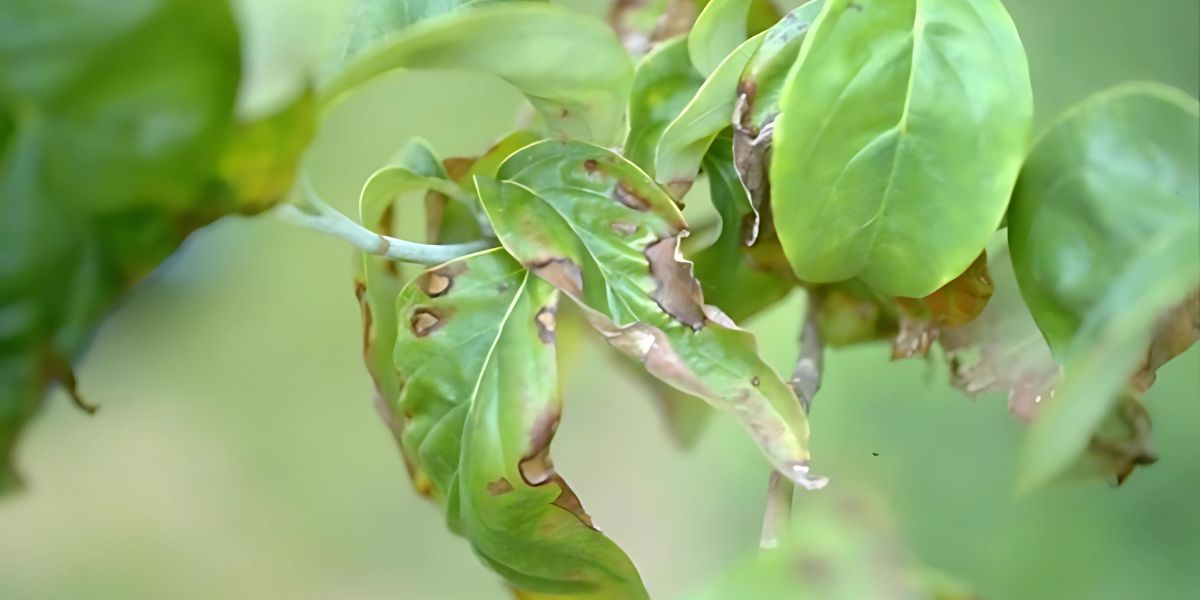
Anthracnose | John Hartman, University of Kentucky, Bugwood.org
3. Anthracnose
Anthracnose is a common fungal disease in Cincinnati that primarily affects sycamore, maple, oak, and dogwood trees. It thrives in cool, wet spring weather. While this disease is rarely fatal to mature trees, repeated infections can weaken them and make them vulnerable to other problems.
This disease affects different tree species in slightly different ways, but most commonly appears as:
- Brown or black spots along leaf veins
- Large dead patches on leaves, often following veins
- Curled or distorted leaves
- Cankers on twigs and branches
- Premature leaf drop in spring or early summer
- Dieback of young shoots and branches
While anthracnose doesn’t usually kill mature trees directly, repeated infections over multiple seasons can leave trees stressed and susceptible to other diseases, pests, and environmental pressures.
You can help control anthracnose by:
- Removing and disposing of fallen leaves in autumn
- Improving air circulation through proper pruning
- Avoiding overhead watering, especially in the evening
- Maintaining good tree health through proper care
- Using fungicides in severe cases or on high-value trees
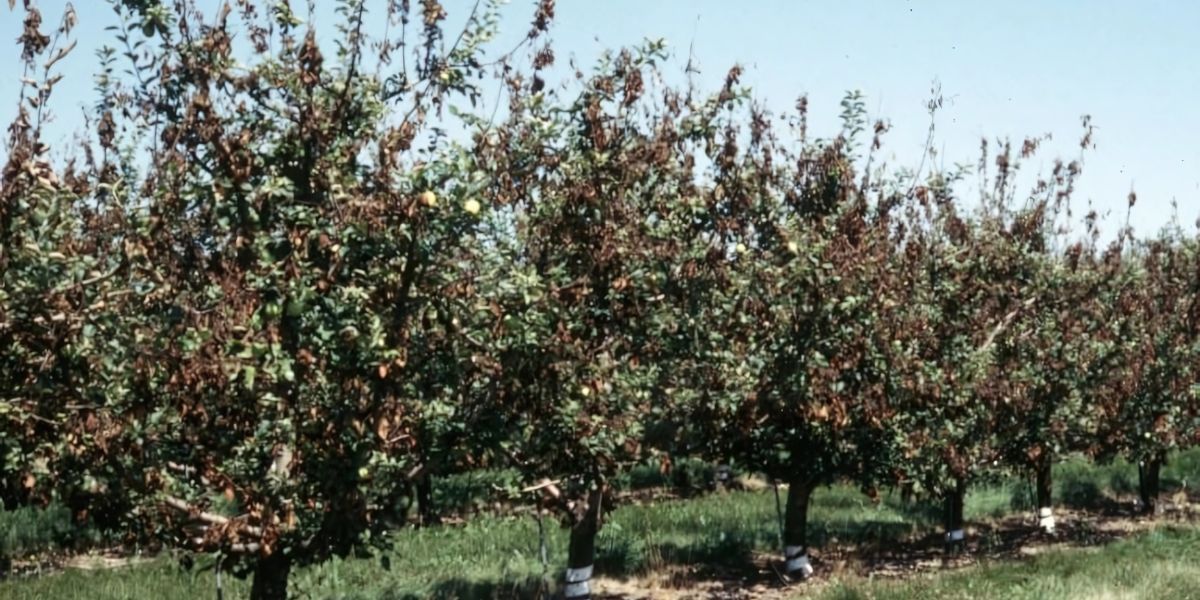
Fire blight | Jody Fetzer, Maryland National Capital Park and Planning Commission, Bugwood.org
4. Fire Blight
Fire blight is a bacterial disease that primarily affects flowering pear, apple, and members of the rose family, including some popular ornamental trees in Cincinnati landscapes. The disease earned its name because infected branches appear as if they’ve been burned by fire.
You’ll know a tree is suffering from fire blight when you notice:
- Branch tips that curl into a distinctive shepherd’s crook
- Blackened leaves that remain attached to branches
- Dark, sunken cankers on branches and trunk
- Bacterial ooze that appears amber in color
- Sudden wilting of blossoms in spring
- Progressive dieback of branches
The disease is particularly destructive during warm, wet springs when trees are blooming. Fire blight can kill young trees within a single season and severely damage mature trees over time.
You can help control or prevent fire blight by:
- Selecting resistant varieties when planting new trees
- Removing infected branches 12 inches below visible damage
- Sanitizing pruning tools between cuts
- Avoiding high-nitrogen fertilizers
- Proper timing of pruning to avoid infection periods
Regular monitoring and prompt removal of infected material is essential for managing this aggressive disease.
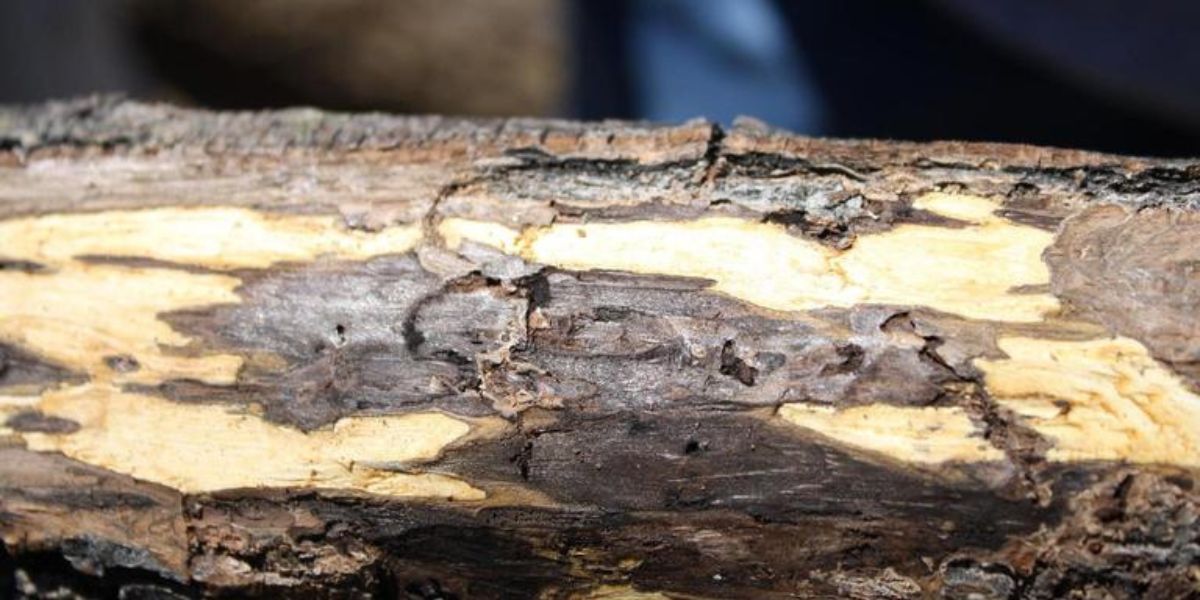
Thousand cankers disease | Karen Snover-Clift, Cornell University, Bugwood.org
5. Thousand Cankers Disease
A relatively new threat to Cincinnati’s walnut trees, thousand cankers disease has been spreading eastward across the United States. Ohio braced for impact, assuming the damage would be similar to emerald ash borer decimating large swatches of trees.
Luckily, these fears haven’t manifested, and the damage from thousand cankers disease hasn’t been as terrible as they first thought.
It is still concerning for Ohio, though, as black walnuts are both ecologically and economically valuable in our region. The disease is caused by a fungus that’s carried by the walnut twig beetle.
The disease gets its name from the numerous small cankers that develop around beetle entrance holes. Property owners should look for:
- Small spots of dead tissue under bark
- Yellowing and thinning leaves starting at crown
- Numerous small holes in bark from beetles
- Branch dieback that worsens each year
- Dark staining under bark
- Progressive crown decline over several years
When symptoms show up, walnut trees often die within 2-3 years, and there’s no effective treatment yet. That’s why prevention and proper care are so important. Avoid moving firewood to reduce the risk of spreading the disease, and focus on keeping your trees healthy – regular watering to prevent drought stress can go a long way in giving them a fighting chance.
If TCD is suspected, removal of the impacted tree must be done carefully to limit the spread of the disease.
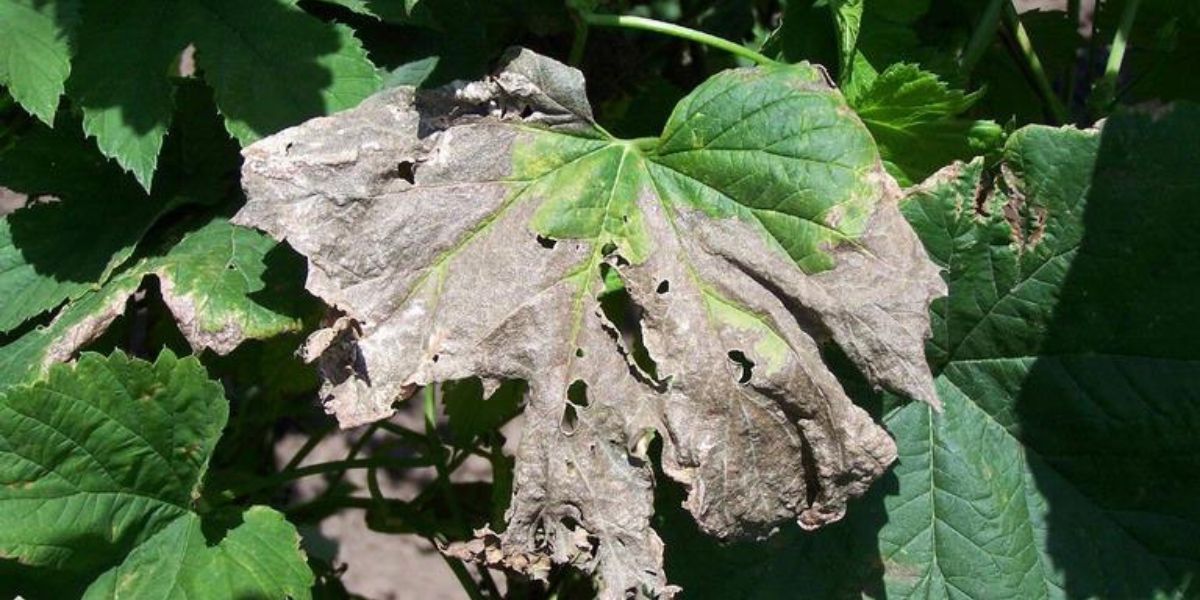
Verticillium wilt | David Gent, USDA Agricultural Research Service, Bugwood.org
6. Verticillium Wilt
Verticillium wilt affects a wide range of trees in the Cincinnati area, including maple, redbud, and magnolia. This soil-borne fungal disease enters through tree roots and spreads through the tree’s vascular system, blocking water movement much like several other vascular diseases.
You can spot this disease by looking for:
- Sudden wilting of leaves on individual branches
- Yellowing leaves that drop while still green
- Brown streaking in sapwood
- Stunted leaf growth
- Dieback of major branches
- One-sided tree decline
This disease is particularly challenging because the fungus can persist in soil for years. Once a tree is infected, the disease is usually fatal, though some trees may survive with reduced growth and vigor for several years.
You can minimize the risk of Verticillium wilt by:
- Avoiding root injury during construction or landscaping
- Proper mulching and watering practices
- Selecting resistant species for replanting
- Improving soil drainage around trees
- Removing severely infected trees and root systems
Preventing Tree Disease in Cincinnati
Taking steps to prevent tree disease is far more effective and less costly than treating problems after they develop. While some diseases are difficult to prevent entirely, property owners can significantly reduce their trees’ risk of infection through basic tree care and ongoing maintenance.
The best defense against tree diseases starts with maintaining healthy trees:
- Water deeply but infrequently to promote strong root growth – especially in summer to prevent drought stress.
- Apply 2-3 inches of organic mulch around trees, keeping it away from the trunk.
- Avoid damaging tree roots or trunks with lawn equipment.
- Prune dead or damaged branches promptly.
- Maintain proper soil drainage around trees.
- Choose disease-resistant varieties when planting new trees.
- Plant numerous tree species on your property to minimize disease risk and spread.
When Tree Removal Becomes Necessary
Despite our best efforts at prevention and treatment, sometimes tree removal is the only safe option. Knowing when to remove a diseased tree can prevent it from becoming a hazard or infecting other trees on your property or on neighboring properties.
Consider removal if your tree shows:
- More than 50% of the crown is dead or dying
- Large dead branches over structures or high-traffic areas
- Significant trunk decay or large cavities
- Active fungal growth on major roots or trunk
- Severe lean that has developed due to root problems
- Multiple major diseases affecting the same tree
Lefke Tree Experts makes the tree removal process as simple as possible. Learn more on our tree removal page, or call us at 513-325-1783 to request a free estimate.
FAQs About Tree Diseases in Cincinnati
How quickly can tree diseases spread to neighboring trees?
Disease spread varies greatly depending on the specific pathogen. Some diseases, like oak wilt, can spread through root systems in just a few weeks, while others may take months or years to affect nearby trees.
When should I check my trees for disease?
While year-round monitoring is ideal, the best times to inspect trees are early spring as leaves emerge and mid-summer when disease symptoms are often most visible.
Can diseased trees recover on their own?
Some minor infections may resolve with proper care, but most serious diseases require professional intervention or may lead to tree death despite treatment.
Take the Next Step Today and Protect the Future of Your Trees
Knowing how to spot common tree diseases in Cincinnati is the first step toward protecting your valuable trees, but early action is essential to prevent serious damage or loss.
For expert tree inspections, pruning, or removal services, Lefke Tree Experts is here to help protect your property and its trees. Call us at 513-325-1783 or request a free estimate through our online form, and our Certified Arborists will help you develop a plan to keep your trees healthy and thriving.

